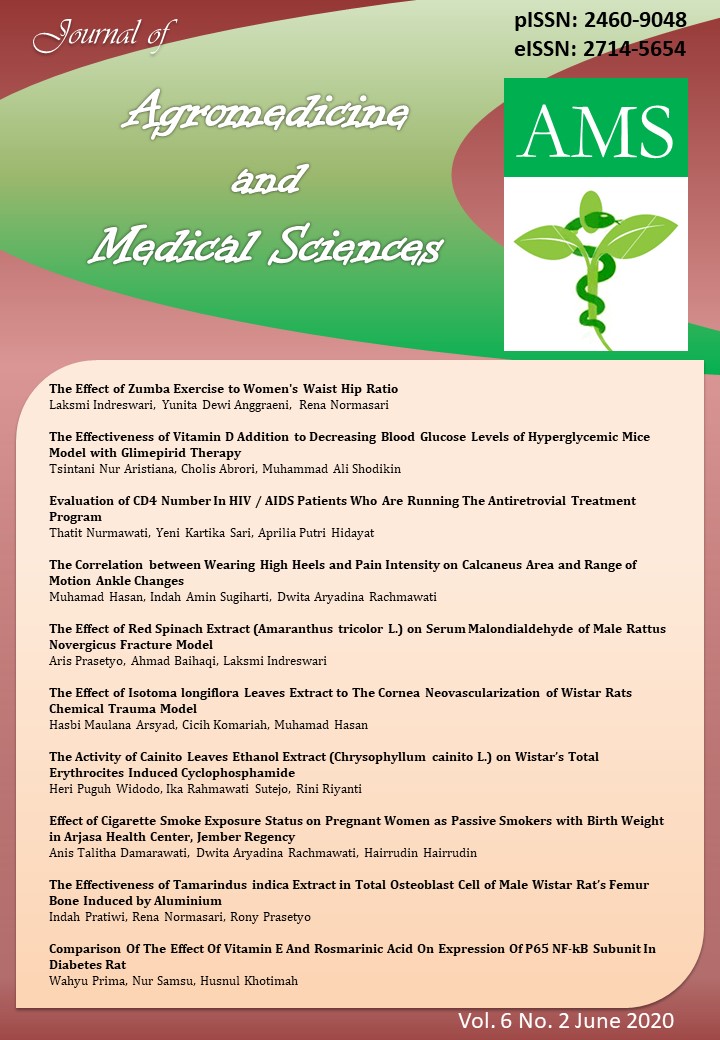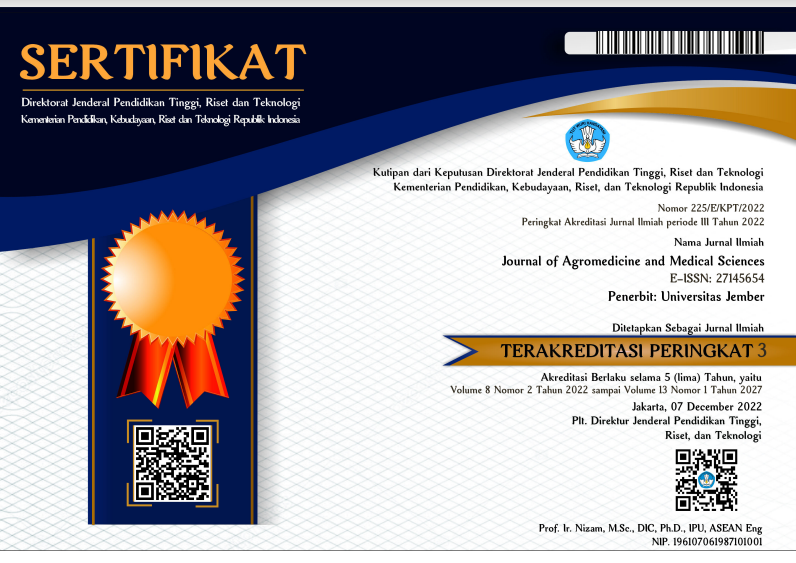The Effectiveness of Vitamin D Addition to Decreasing Blood Glucose Levels of Hyperglycemic Mice Model with Glimepirid Therapy
DOI:
https://doi.org/10.19184/ams.v6i2.10206Abstract
Abstract
Low 25-hydrocyvitamin D (25(OH)D3) levels are usually found in patients with type 1 and type 2 diabetes mellitus. This study aims to compare the effectiveness of fasting blood glucose levels in hyperglycemic mice model with glimepirid single therapy, hyperglycemic mice model with vitamin D, and mice model of hyperglycemic with glimepirid therapy plus vitamin D. This study used the true experimental research design with the randomized posttest only control group design. There were 25 male mice (Mus musculus) strain Balb/C with 20-30 g body weight and 2-3 months old which were grouped into 5 groups. The negative control group (K1) was injected with placebo and the positive control group (K2) was injected with STZ 150 mg/kgBW i.p. Groups P1, P2, and P3 were given STZ injection of 150 mg/kgBW i.p and given glimepirid 0.26 mg/kgBW; vitamin D 6,5 ml/kgBW; glimepirid 0,26 mg/kgBW with vitamin D supplementation 6,5 ml/kgBW. The results of the Tukey post hoc tests obtained differences in the mean of delta KGD between groups P1 and K2 = 122,55; in group P2 with K2 = 81,60; and in group P3 with K2 = 74,40. From these data, it can be concluded that in the group given glimepirid plus vitamin D there was no additional effectiveness in decreasing fasting blood glucose levels of hyperglycemic mice model compared to the group given only glimepirid therapy and the group given vitamin D alone.
Keywords: diabetes mellitus, vitamin D, glimepiride, streptozotocin.






















